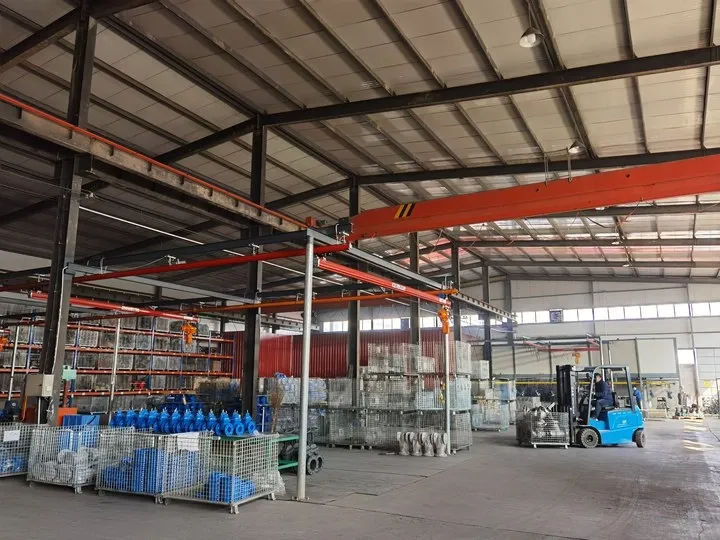double acting electric actuator
Double Acting Electric Actuators An Overview
In the realm of industrial automation, the double acting electric actuator holds a pivotal role in optimizing performance and enhancing operational efficiency. These devices have gained significant traction in various industries due to their versatility, reliability, and ease of integration into existing systems. This article delves into the workings, advantages, applications, and future trends of double acting electric actuators.
Understanding Double Acting Electric Actuators
At the core of a double acting electric actuator is the principle of converting electrical energy into mechanical motion. Unlike single acting actuators that use a return spring for movement in one direction, double acting actuators can provide force in both directions. This capability is achieved through the use of an electric motor and a screw mechanism or a linear drive system, which allows for smooth and controlled movement.
These actuators typically consist of several key components a motor, a gearbox, a lead screw or ball screw, and a housing that protects the internal mechanism. When electrical energy is supplied to the motor, it drives the gearbox, which then translates the rotational motion into linear motion via the screw mechanism.
Key Advantages
1. Precise Control and Positioning One of the standout features of double acting electric actuators is their ability to deliver precise control over position and speed. Advanced control systems can enable operators to adjust parameters to achieve the desired motion, making them ideal for applications that require high levels of accuracy.
2. Energy Efficiency Compared to pneumatic or hydraulic actuators, electric actuators tend to be more energy-efficient. They typically consume less power during operation and do not require the additional energy expenditures associated with air compressors or hydraulic fluid management.
3. Reduced Maintenance Costs Electric actuators have fewer moving parts and don’t rely on fluid systems, which can leak and require regular maintenance. The inherent simplicity and robustness of electric actuators often lead to lower downtime and maintenance costs over time.
4. Environmental Considerations With growing awareness of environmental issues, industries are increasingly opting for electric actuators, which produce less noise and have no emissions. This alignment with sustainability goals makes them an appealing choice for many applications.
double acting electric actuator

5. Compact Design Double acting electric actuators are generally more compact compared to their pneumatic and hydraulic counterparts. This space-saving design is advantageous in applications where space is limited.
Applications of Double Acting Electric Actuators
Double acting electric actuators are employed across various sectors, showcasing their versatility
- Manufacturing In automated assembly lines, these actuators control the movement of parts and machinery, ensuring smooth and efficient operations. - Automotive Electric actuators are utilized in testing equipment and machinery, enhancing precision in production processes. - Food and Beverage They are used for regulating valves and controlling processes in food and beverage production, where hygiene and efficiency are paramount. - Aerospace In the aerospace industry, double acting electric actuators play a critical role in controlling flaps, landing gear, and other essential mechanisms where reliability and precise control are vital. - Water Treatment They are often used to control valves in water treatment plants, ensuring proper flow and treatment processes.
Future Trends
As technology continues to evolve, double acting electric actuators are poised for further advancements. The integration of smart technologies, such as IoT (Internet of Things), will enable real-time monitoring and intelligent control of actuators. This development will enhance predictive maintenance capabilities, reducing unexpected downtimes.
Moreover, as industries push for greater energy efficiency and sustainability, the demand for electric actuators is likely to increase. Innovations such as enhanced materials for construction, improved energy recovery systems, and advanced control algorithms will continue to drive the evolution of these devices.
Conclusion
In summary, double acting electric actuators are integral components in modern automation systems. Their ability to provide precise control, energy efficiency, and a lower maintenance burden makes them an excellent choice for a wide array of applications. As technology progresses, these actuators will undoubtedly evolve, leading to even more sophisticated and efficient solutions for industries across the globe. This makes mastering their functionality and understanding their applications crucial for any professional engaged in automation and control systems.
-
The Versatility of Ball Valves in Fluid Control SystemsNewsJun.10,2025
-
The Practical Benefits of Centerline Butterfly ValvesNewsJun.10,2025
-
The Benefits of Bellows Seal Globe Valves for Industrial SystemsNewsJun.10,2025
-
The Advantages of Offset Butterfly ValvesNewsJun.10,2025
-
Ductile Gate Valves: Strong, Reliable, and Essential for Every SystemNewsJun.10,2025
-
Cast Iron Gate Valves: A Reliable Solution for Every SystemNewsJun.10,2025
-
Why Choose a Brass Gate Valve for Superior Performance and DurabilityNewsMay.09,2025




